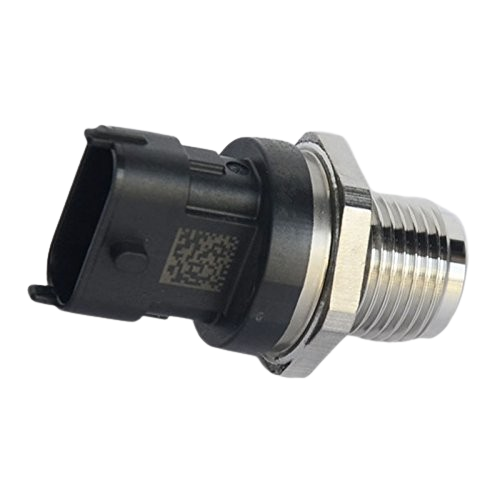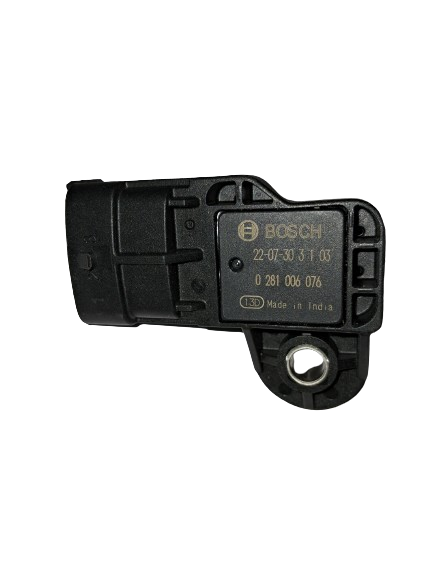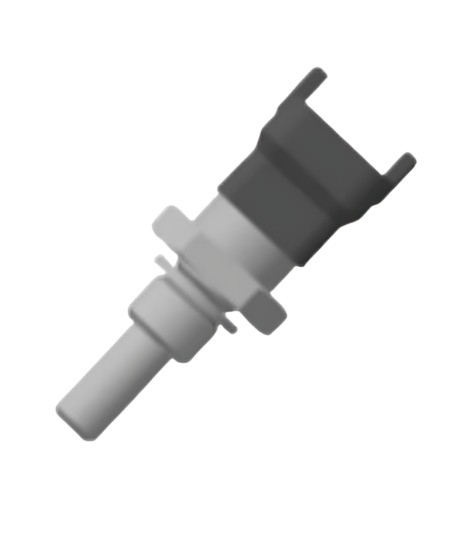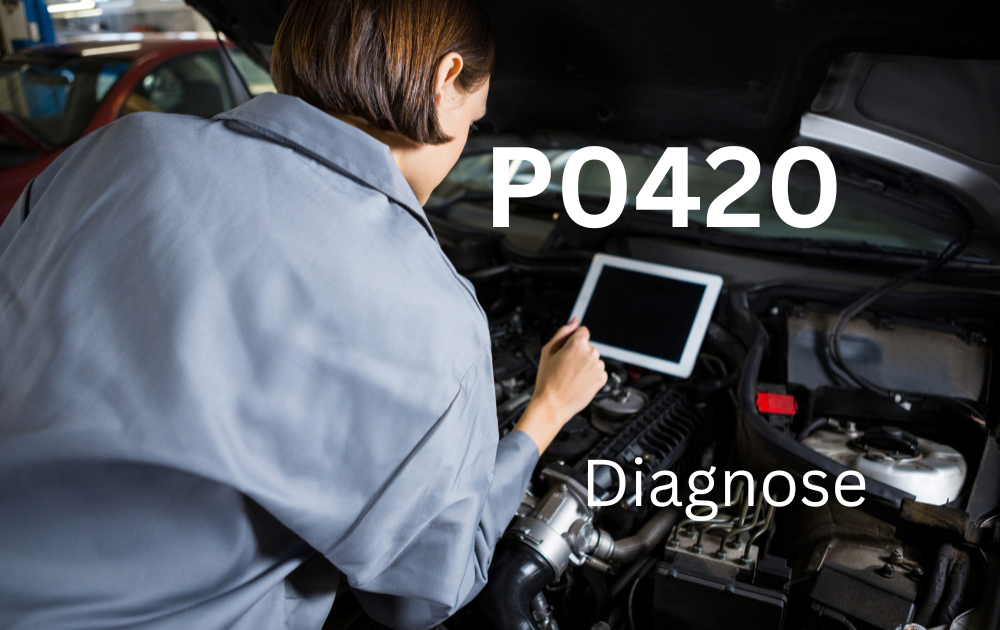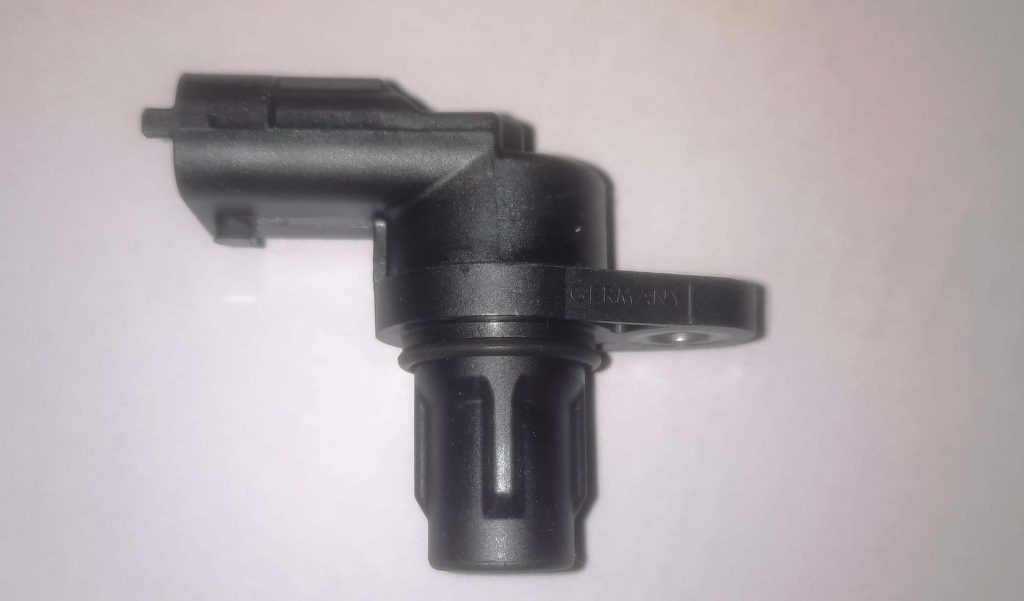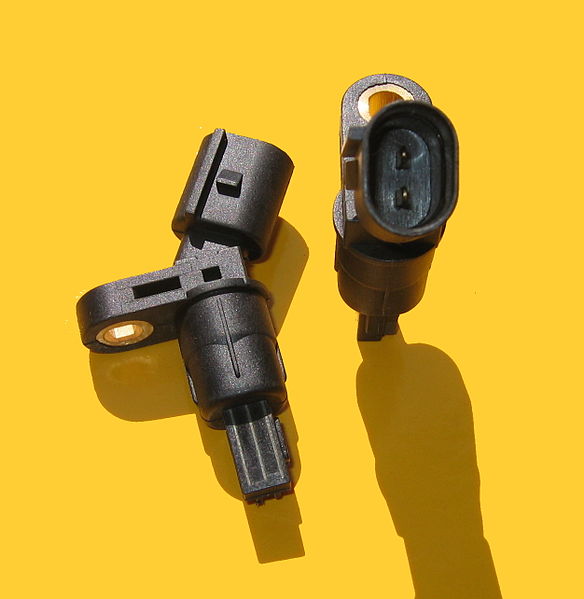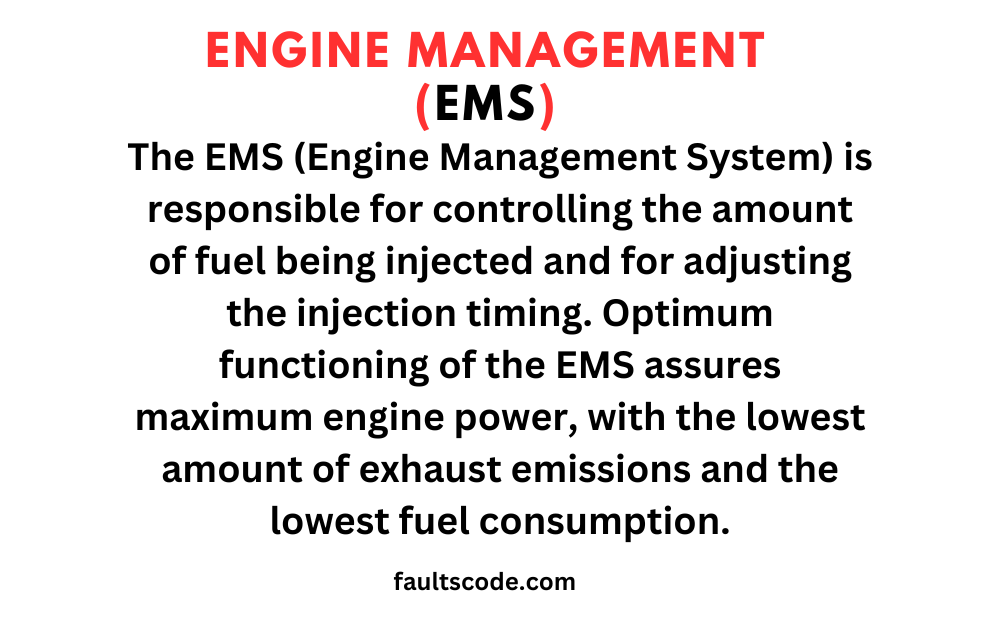Accelerator Pedal Sensor: The Key to Smooth Driving and Safety

Accelerator Pedal Sensor
In the fast-paced world of automotive technology, the accelerator pedal sensor stands as a crucial component, often overlooked, yet fundamental to the smooth operation of modern vehicles. This article delves into the intricacies of the accelerator pedal sensor, exploring its significance, functionality, and impact on vehicle performance and safety.
Understanding the Accelerator Pedal Sensor
The accelerator pedal sensor, commonly referred to as APS, is a vital part of the vehicle’s electronic throttle control system. Its primary function is to detect the position and movement of the accelerator pedal and transmit this information to the engine control unit (ECU). This data is then used by the ECU to adjust the engine’s throttle accordingly, regulating the vehicle’s speed and acceleration.
Importance in Modern Vehicles
In today’s automotive landscape, where precision and efficiency are paramount, the accelerator pedal sensor plays a pivotal role in ensuring optimal performance. By accurately relaying the driver’s input to the vehicle’s engine management system, the APS facilitates seamless acceleration, smooth transitions between gears, and overall enhanced driving experience.
Significance for Performance and Safety
Understanding the functionality of the accelerator pedal sensor is not only essential for maximizing vehicle performance but also for ensuring safety on the road. A faulty or malfunctioning APS can lead to issues such as sudden acceleration, loss of power, or even complete engine failure, posing significant risks to both the occupants of the vehicle and other road users. Therefore, maintaining the integrity and functionality of the accelerator pedal sensor is paramount for safe and efficient driving.
In the subsequent sections, we will delve deeper into the working principles of the accelerator pedal sensor, its various types, common issues, and maintenance practices to keep it in optimal condition. Let’s embark on this journey to unravel the mysteries behind this seemingly simple yet indispensable component of modern automotive technology.
Understanding the Accelerator Pedal Sensor
The accelerator pedal sensor (APS) is a crucial component of the electronic throttle control system in modern vehicles. Its primary function is to detect and translate the movement of the accelerator pedal into electronic signals, which are then utilized by the engine control unit (ECU) to adjust the engine’s throttle.

Definition and Basic Functionality
At its core, the accelerator pedal sensor is designed to sense the position and movement of the accelerator pedal as the driver applies pressure or releases it. This information is essential for the vehicle’s engine management system to determine the desired level of throttle opening and correspondingly adjust fuel injection and air intake for optimal performance.
Translating Pedal Movement into Electronic Signals
The accelerator pedal sensor achieves this by employing various technologies, but the fundamental principle remains consistent across different designs. Typically, the sensor utilizes a potentiometer or a non-contact mechanism to convert mechanical motion into electrical signals.
- Potentiometer-Based Sensors: These sensors consist of a resistive element connected to the accelerator pedal. As the pedal is depressed or released, a wiper arm moves along the resistive track, changing the resistance. This change in resistance is then converted into voltage signals, which are proportional to the pedal position, and sent to the ECU.
- Non-Contact Sensors: In contrast, non-contact sensors use alternative methods such as Hall-effect sensors or magnetic fields to detect pedal movement without physical contact. These sensors offer advantages like greater reliability and durability due to the absence of mechanical components.
Types of Accelerator Pedal Sensors
Accelerator pedal sensors come in various types, primarily distinguished by their sensing technology:
- Potentiometer-Based Sensors: Traditional design using resistive elements and wiper arms.
- Non-Contact Sensors: Utilize magnetic fields or Hall-effect sensors for contactless detection.
Placement and Connection in the Vehicle
The accelerator pedal sensor is typically located near the accelerator pedal assembly within the vehicle cabin. It is connected to the pedal mechanism via mechanical linkage or electronic connections, depending on the sensor type. Additionally, the sensor is wired to the ECU, ensuring seamless communication and integration into the vehicle’s control system.
Understanding the intricacies of the accelerator pedal sensor’s design, operation, and placement is essential for diagnosing issues, performing maintenance, and optimizing its performance within the vehicle’s electronic control architecture.
Role in Vehicle Performance
The accelerator pedal sensor (APS) serves as a crucial link between the driver’s input and the engine control unit (ECU), exerting significant influence over vehicle performance and responsiveness. In this section, we explore the intricate relationship between the APS and the ECU, its impact on engine response, throttle control, and overall driving dynamics.
Relationship with the Engine Control Unit (ECU)
The APS acts as the primary interface through which the driver communicates their acceleration intentions to the vehicle’s ECU. By continuously monitoring the position and movement of the accelerator pedal, the sensor provides real-time feedback to the ECU, enabling it to adjust the engine’s throttle position accordingly. This seamless communication between the APS and the ECU forms the backbone of modern drive-by-wire systems, where electronic signals replace traditional mechanical linkages.
Influence on Engine Response and Throttle Control
The signals generated by the APS play a pivotal role in shaping the engine’s response to driver inputs. By accurately translating pedal movement into electronic signals, the sensor enables precise control over throttle opening, fuel injection, and air intake. This, in turn, affects the engine’s torque output, power delivery, and overall responsiveness, allowing for smooth acceleration and seamless transitions between different driving conditions.
Contribution to Smoother Acceleration and Fuel Efficiency
Accurate sensor readings are essential for achieving optimal engine performance and fuel efficiency. When the APS provides precise feedback to the ECU, the engine can adjust its operating parameters more efficiently, leading to smoother acceleration and reduced fuel consumption. By maintaining the ideal air-fuel mixture and throttle response, the APS helps optimize engine efficiency, contributing to enhanced fuel economy and reduced emissions.
Importance in Modern Drive-by-Wire Systems and Electronic Stability Control
In modern vehicles equipped with drive-by-wire systems and electronic stability control (ESC), the APS assumes even greater significance. These advanced systems rely heavily on accurate sensor data to regulate engine power, traction control, and stability enhancement features. By integrating the APS into the vehicle’s electronic architecture, manufacturers can implement sophisticated control algorithms that enhance both performance and safety under diverse driving conditions.
The accelerator pedal sensor plays a pivotal role in shaping vehicle performance, responsiveness, and efficiency. Its seamless interaction with the engine control unit forms the cornerstone of modern drive-by-wire systems, while its accurate readings contribute to smoother acceleration, improved fuel economy, and enhanced safety features such as electronic stability control. Understanding the importance of the APS is essential for appreciating the intricacies of modern automotive technology and optimizing driving experiences.
Impact on Safety
The accelerator pedal sensor (APS) plays a pivotal role in ensuring the safety of both drivers and passengers in modern vehicles. In this section, we delve into the sensor’s influence on critical safety situations, the safety features it enables, and the potential risks associated with sensor malfunctions.
Role in Safety-Critical Situations
In safety-critical scenarios such as sudden acceleration or emergency braking, the APS serves as a key determinant of vehicle response. By accurately relaying driver inputs to the engine control unit (ECU), the sensor enables swift and precise adjustments to throttle control and engine power. In situations where rapid deceleration or avoidance maneuvers are necessary, the APS plays a crucial role in maintaining vehicle stability and control.
Safety Features Enabled by the Sensor
The APS facilitates the implementation of advanced safety features aimed at enhancing vehicle stability and traction control. Systems such as traction control and electronic stability programs rely on real-time sensor data to detect wheel slip, oversteer, or understeer conditions. By modulating engine power and braking force, these safety systems help prevent skidding, loss of control, and potential accidents, particularly in adverse weather or road conditions.
Risks Associated with Sensor Malfunctions
Despite its importance in ensuring safety, the accelerator pedal sensor is not immune to malfunctions or failures. Sensor inaccuracies, signal disruptions, or mechanical faults can lead to unintended consequences, including erratic throttle response, sudden acceleration, or loss of power. In extreme cases, sensor malfunctions may compromise the effectiveness of safety systems such as traction control or electronic stability programs, increasing the risk of accidents or collisions.
Implications for Driver and Passenger Safety
The implications of sensor malfunctions for driver and passenger safety cannot be overstated. Sudden acceleration or loss of throttle control can result in loss of vehicle control and potentially life-threatening situations. Similarly, failures in safety systems reliant on APS data may diminish the vehicle’s ability to mitigate hazardous driving conditions, putting occupants at greater risk of injury or harm.
The accelerator pedal sensor plays a critical role in enhancing vehicle safety through its influence on throttle control, stability programs, and traction control systems. However, the potential risks associated with sensor malfunctions underscore the importance of regular maintenance, diagnostic checks, and adherence to safety protocols. By understanding the impact of the APS on safety-critical situations, drivers and manufacturers can work together to mitigate risks and ensure safer driving experiences for all road users.
Maintenance and Troubleshooting
Proper maintenance and timely troubleshooting of the accelerator pedal sensor (APS) are essential for ensuring optimal vehicle performance, reliability, and safety. In this section, we provide guidelines for maintaining and inspecting the APS, identify common signs of sensor failure, and outline steps for diagnosing and resolving issues related to the sensor.
Guidelines for Maintaining and Inspecting the APS
- Regular Inspection: Periodically inspect the APS for signs of wear, damage, or corrosion. Ensure that the sensor and its connecting components are free from debris and obstruction.
- Cleaning: Keep the APS and surrounding area clean to prevent buildup of dirt or contaminants that may affect sensor performance. Use a gentle cleaning solution and a soft cloth to remove any residue.
- Check Connections: Inspect the electrical connections and wiring harnesses associated with the APS for signs of damage, loose connections, or corrosion. Ensure secure connections to prevent signal disruptions.
- Follow Manufacturer Recommendations: Adhere to the manufacturer’s recommended maintenance schedule for the APS. This may include periodic calibration or replacement intervals based on vehicle mileage or operating conditions.
Common Signs of Sensor Failure or Malfunction
- Erratic Throttle Response: Sudden changes in engine speed or unresponsive acceleration may indicate APS malfunction.
- Engine Stalling: If the engine stalls or hesitates when the accelerator pedal is pressed, it could be a sign of APS failure.
- Warning Lights: Illumination of the check engine light or other warning indicators on the dashboard may signal sensor-related issues.
- Reduced Performance: Decreased engine power, sluggish acceleration, or difficulty maintaining speed could be attributed to APS malfunction.
Steps for Diagnosing and Resolving Issues
- Diagnostic Scan: Use a diagnostic scan tool to retrieve error codes from the vehicle’s onboard computer. This can help pinpoint specific APS-related issues and guide troubleshooting efforts.
- Visual Inspection: Visually inspect the APS and associated components for visible signs of damage, wear, or corrosion. Address any issues found during the inspection process.
- Testing Procedures: Perform voltage or resistance tests on the APS to verify proper functionality. Refer to the vehicle’s service manual for specific testing procedures and specifications.
- Replacement or Repair: If the APS is found to be faulty or malfunctioning, replace it with a new unit or repair any damaged components as necessary. Follow proper installation procedures and ensure secure connections.
Importance of Regular Sensor Maintenance
Regular maintenance of the accelerator pedal sensor is crucial for preventing accidents, ensuring vehicle reliability, and preserving overall driving safety. By proactively inspecting, cleaning, and testing the APS, drivers can identify and address potential issues before they escalate into more significant problems. Additionally, adherence to manufacturer recommendations for sensor maintenance helps prolong its lifespan and optimize performance, ultimately contributing to a safer and more dependable driving experience.
Prioritizing maintenance and troubleshooting of the accelerator pedal sensor is essential for maintaining vehicle safety and performance. By following the guidelines outlined above and staying vigilant for signs of sensor malfunction, drivers can minimize the risk of accidents, enhance vehicle reliability, and promote safer driving habits on the road.
Future Developments and Innovations
The evolution of accelerator pedal sensor (APS) technology continues to push the boundaries of automotive engineering, paving the way for groundbreaking advancements in vehicle performance, safety, and autonomous driving capabilities. In this section, we explore emerging trends and innovations in APS technology, potential integration with autonomous driving systems, and the transformative impact on future vehicle design and functionality.
Advancements in APS Technology
- Smart Sensor Integration: Future APS designs may incorporate advanced sensor technologies such as MEMS (Micro-Electro-Mechanical Systems) and CMOS (Complementary Metal-Oxide-Semiconductor) to enhance accuracy, responsiveness, and reliability.
- Predictive Algorithms: With the advent of machine learning and artificial intelligence, APS systems could utilize predictive algorithms to anticipate driver behavior and optimize throttle response in real-time, leading to smoother acceleration and improved fuel efficiency.
- Contactless Sensing: Non-contact APS technologies, such as optical sensors or capacitance-based systems, may gain prominence due to their inherent advantages in terms of durability, precision, and resistance to mechanical wear.
Integration with Autonomous Driving Systems
- Autonomous Vehicle Control: APS technology is poised to play a crucial role in the transition towards autonomous driving systems. By seamlessly integrating with vehicle control algorithms, APS can provide essential input for automated throttle modulation, adaptive cruise control, and dynamic speed regulation in self-driving vehicles.
- Vehicle-to-Infrastructure Communication: APS sensors may also contribute to vehicle-to-infrastructure (V2I) communication networks, enabling vehicles to receive real-time traffic data, road conditions, and navigation updates. This integration enhances situational awareness and enables more efficient route planning and traffic management.
Enhanced Performance and Safety Standards
- Precision and Responsiveness: Future APS advancements promise to deliver unparalleled precision and responsiveness, allowing for finer control over throttle modulation and acceleration profiles. This translates into smoother driving experiences, enhanced vehicle stability, and improved overall performance.
- Safety Innovations: Evolving APS technology will continue to underpin the development of advanced safety features such as predictive collision avoidance, automatic emergency braking, and intelligent driver assistance systems. By leveraging real-time sensor data, these innovations enhance vehicle safety standards and mitigate the risk of accidents in diverse driving scenarios.
- Energy Efficiency: Optimized throttle control facilitated by advanced APS systems contributes to improved energy efficiency and reduced emissions. By fine-tuning engine performance based on driver inputs and environmental conditions, future vehicles equipped with sophisticated APS technology can achieve greater fuel economy without compromising performance.
Related DTCs Associated with accelerator pedal sensor issues may include:
- P0120 – Throttle/Pedal Position Sensor A Circuit Malfunction: This DTC indicates a problem with the circuitry or signal from the accelerator pedal position sensor.
- P0121 – Throttle/Pedal Position Sensor A Circuit Range/Performance Problem: This code suggests that the signal from the accelerator pedal position sensor is out of the expected range or performance.
- P0122 – Throttle/Pedal Position Sensor A Circuit Low Input: This DTC indicates that the voltage signal from the accelerator pedal position sensor is lower than expected.
- P0123 – Throttle/Pedal Position Sensor A Circuit High Input: Conversely, this code suggests that the voltage signal from the accelerator pedal position sensor is higher than expected.
- P0220 – Throttle/Petal Position Sensor/Switch B Circuit Malfunction: This code may appear if there is a problem with the secondary (B) circuit of the accelerator pedal position sensor.
- P0221 – Throttle/Petal Position Sensor/Switch B Circuit Range/Performance Problem: Similar to P0121, this code indicates an issue with the range or performance of the secondary (B) circuit of the accelerator pedal position sensor.
- P0222 – Throttle/Petal Position Sensor/Switch B Circuit Low Input: Indicates that the voltage signal from the secondary (B) circuit of the accelerator pedal position sensor is lower than expected.
- P0223 – Throttle/Petal Position Sensor/Switch B Circuit High Input: Indicates that the voltage signal from the secondary (B) circuit of the accelerator pedal position sensor is higher than expected.
These DTCs are generated by the vehicle’s onboard diagnostics system when it detects abnormalities or faults related to the accelerator pedal sensor. Diagnosing and resolving the underlying issues indicated by these codes is crucial for maintaining vehicle performance, safety, and reliability.
Conclusion
Throughout this exploration, we’ve delved into the intricate workings of the accelerator pedal sensor (APS) and its profound impact on vehicle operation, performance, and safety. From its fundamental role in translating driver inputs into electronic signals to its integration with advanced safety and autonomous driving systems, the APS stands as a cornerstone of modern automotive technology.
The accelerator pedal sensor serves as the bridge between the driver and the vehicle’s engine control unit (ECU), facilitating precise throttle control, seamless acceleration, and enhanced driving dynamics. Its significance in ensuring smooth operation, efficient power delivery, and optimal fuel economy cannot be overstated.
Moreover, the APS plays a critical role in vehicle safety, enabling the implementation of advanced safety features such as traction control, electronic stability programs, and autonomous driving functionalities. By providing real-time feedback to the vehicle’s control systems, the APS enhances responsiveness, stability, and collision avoidance capabilities, thereby mitigating risks and ensuring the safety of occupants and other road users.
As we look to the future of automotive technology, it becomes increasingly clear that understanding and maintaining the accelerator pedal sensor are essential for optimal vehicle performance and driver safety. Regular inspection, cleaning, and diagnostic checks of the APS can help identify potential issues early, preventing accidents and ensuring the reliability of this crucial component.
In conclusion, the accelerator pedal sensor represents not just a simple sensor, but a key enabler of safer, smarter, and more efficient driving experiences. By recognizing its significance and prioritizing its maintenance, drivers can uphold the highest standards of vehicle performance, safety, and reliability on the road.

















